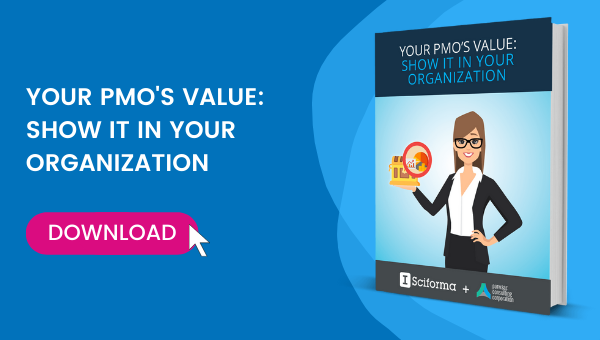Agile management methods and techniques are ubiquitous in today’s Project Portfolio Management spheres. So much so that PMOs understandably wonder: What is the Agile PPM methodology? Is Agile for me? Does my project organization stand to benefit from a switch to Agile PPM?
This piece provides a profile of the businesses and organizations that are using Agile PPM methods today, along with an overview of the conditions and requirements that should be met in order for Agile to give full measure and deliver the expected benefits.
What is the Agile PPM Methodology: A Brief History
The inception of Agile dates back to the early 2000s. Mounting frustrations with the traditional approach to project management prompted a small group of software engineers to join heads in order to figure out how to improve and speed up the software development process. The Founding Fathers of Agile came up with a Manifesto structured around four values and 12 pillars, introducing a new, lightweight approach to product development and project management.
The ideas, concepts, and methods included in the new Agile management framework gradually picked up steam in the software development field throughout the 2000s. In the 2010s, as real-life metrics and success stories began to emerge and demonstrate the effectiveness of Agile, adoption skyrocketed with IT teams and Agile soon started to spread beyond the spheres of software.
Today, about half of all organizations have been using Agile practices, according to a 2020 international study by Organize Agile. The likes of Spotify, eBay, Twitter, and corporate behemoths such as Walmart and Verizon have become members of the club. From software and IT, Agile principles have expanded to a whole array of other functions. In other words, Agile has become very difficult to ignore.
The Benefits of the Agile PPM Methodology
The key reason behind the fast ascent to prominence of Agile is its unrivaled effectiveness when it comes to managing projects amid an uncertain and rapidly changing environment.
Agile is an iterative approach that advocates building products or software incrementally instead of revealing the finished deliverables at the very end of the process. Compared to the traditional Waterfall approach, Agile provides businesses with a faster, more flexible, and more efficient way of managing projects and product development cycles. Applying Agile methods usually result in reduced time-to-market, improved customer satisfaction, and therefore a more solid market position.
Finally, Agile has had a positive impact on an organization’s culture, as Agile tenets encourage team member empowerment and constructive collaboration.
Organizations and Teams Benefitting Most from the Agile Methodology
Now that more than just software teams use the Agile methodology, let’s have a look at those industries and lines of business that have successfully adopted and implemented the principles.
Businesses that engage in technology development and innovation
As Agile veers away from process enforcement and painstaking planning to embrace adaptation to evolving requirements, the framework particularly benefits innovation management. Research and new technology development projects typically don’t follow an established pattern. The initial scope and requirements usually evolve over time, prototypes and proofs of concept may call for adjustments to the deliverables, and accelerating time-to-market is essential to beat the competition and stay ahead of the curve. Adopting flexible quick methods provides a ready-made, all-in-one response to all these challenges.
Product- and consumer-oriented organizations
Although the tenets of Agile were initially designed to optimize projects that result in tangible deliverables rather than services, the method can be successfully applied to the development and marketing of any product or service, either internally or externally focused. At the core of the Agile method is a concern to meet project needs, resulting in an emphasis on client involvement and feedback. The Scrum — by far the most widespread form of Agile methodology — and Extreme Programming (XP) frameworks rely on “User Stories” that depict requirements from the perspective of the end user of the product or service, providing insight into actual real expectations of real-life consumers.
Furthermore, each of the iterations that make up the development process concludes with a review meeting designed to run the work done by the customer or Product Owner (that is, the one who knows what the end result should look like). Since the client (or acting client) gets to inspect and test the deliverables during the development process, requests for changes and improvements can be collected and integrated earlier, resulting in better and fitter products or services.
Another objective of the methods is to accelerate development and time-to-market, thereby helping consumer-oriented businesses address changing market needs in a timely manner.
Organizations navigating complexity and disruption
Beyond the realm of software or product/service development, it proves highly effective as a methodology for organizational change and transformation or response to market disruption.
As a matter of fact, using Agile principles may have tremendously helped businesses weather the COVID-19-related crisis. From strategic and business planning adjustments in order to meet changing market conditions to supply chain stabilization and to resource reshuffling, applying it has proved instrumental in helping firms pivot in response to extreme disruption.
Suggested reads about Agile PPM methodologies:
- An Overview of Project Management Methodologies
- Speed is King: Building Agility into Effective Planning and Delivery Practices
- 3 Ways to Incrementally Adopt Agile








Isabelle Bouscatie
With many years as a EMEA Marketing Manager under her belt, Isabelle is presently in charge of Sciforma’s customer marketing and global events. She thrives in Sciforma’s dynamic, fast-paced digital environment and she enjoys working in direct contact with customers, who help her keep abreast of PPM challenges across organizations.